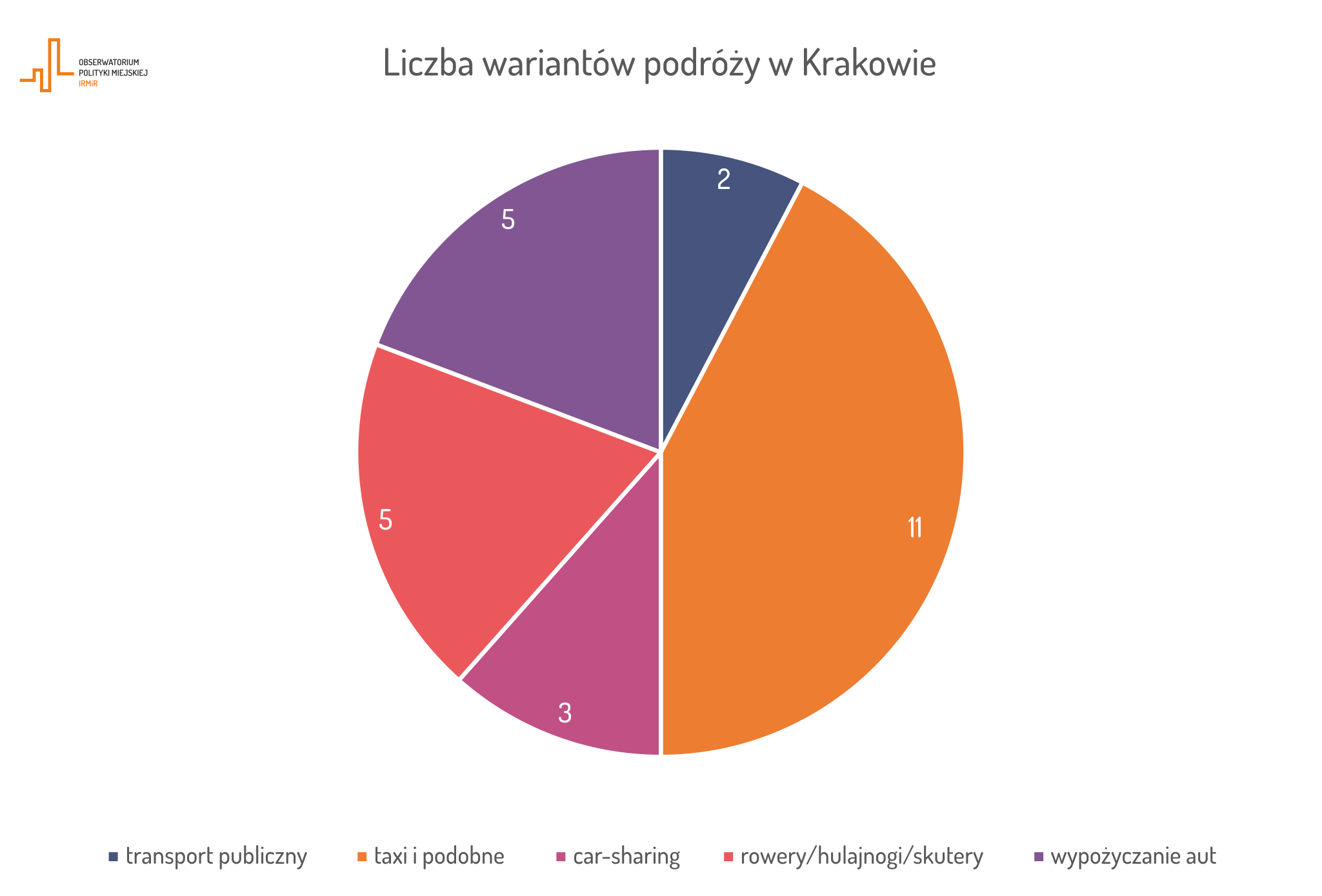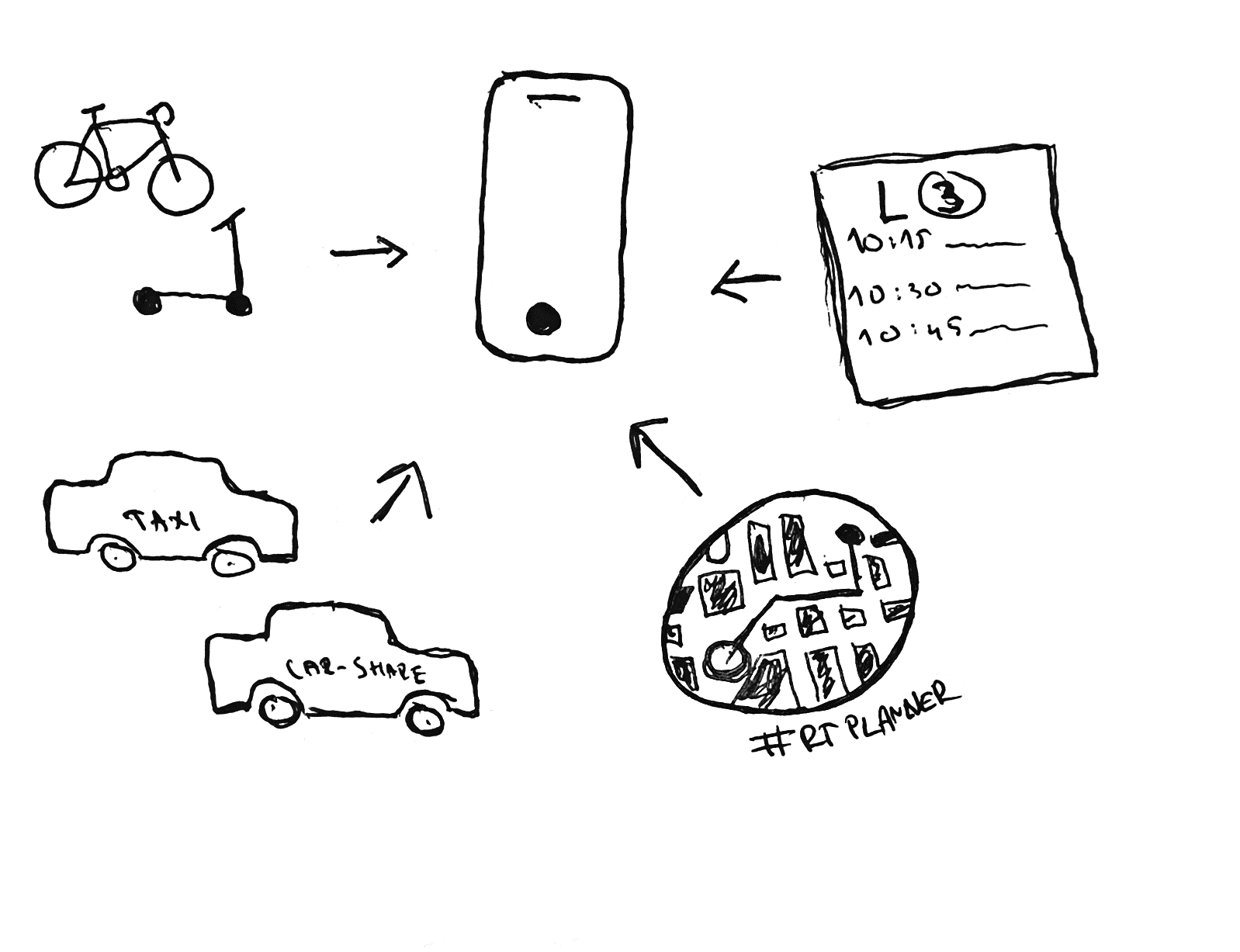MaaS could change daily travelling - time to create a shared vision
this is and English version of the post on MaaS, and it’s potential in Cracow; initially written for Observatorium Politiky Miejskiej (Urban Policy Observatory)
There are at this moment more than 20 transportation modes & services available in Cracow which is an excellent asset for the variability of Cracows transportation system but makes it difficult for the end-user to compare and find the best solution.
Thanks to the fast development of technology and sharing economy models in the field of transportation, there is a new concept on how to deliver personalized transportation services to the end-user and smoothen day-to-day commuting. With Mobility as a Service (MaaS), the best solution is one tap away.
Cracow has thus now a potential to deliver smart and integrated transportation service which would be beneficial not only for the end-users itself but would also help the city to follow it’s narratives of a modern and powerful European metropolis. The main question in doing so lies in finding a shared vision on what the backbone of the MaaS ecosystem is going to be.
From ownership-based to access-bases
Modern cities all around the world are witnesses of newly emerging dynamic in travel behaviour resulting in a shift from the ownership-based model to the access-based model. People just have decided due to various reasons to use their private cars less and jump into new transportation services like car/bike/scooter sharing, Bolt, Uber etc. Cracow is not an exception, so it’s residents and visitors might benefit from more than 20 transportation modes and services.
Such variability is twofold. From one hand, it is great to have a different option in terms of price, comfort, speed, health or ecological footprint. On the other hand, the biggest flaw of the current state is that it’s making it difficult for the end-users to find what’s best. Each transportation mode and service has its app, which doesn’t make it easy for the end-users to find the best solution at the very moment. What initially should increase the quality of the transportation system, wellbeing and push the urban development one step closer to a more sustainable system, might end up with users fixed in one travel pattern. No matter how (un)effective are the others.

- http://obserwatorium.miasta.pl/wiele-srodkow-transportu-jeden-system-czym-jest-mobility-as-a-service/
The end-destination just one tap away
Mobility as a Service (MaaS) is a new concept in mobility research, which addresses the problem with too many options to choose from by providing a single environment. MaaS emerged as a reaction to new travel behaviour, development in technology and is connecting all available means of transport and services into one. It as an integrated platform combining public, private and shared means of transportation with just a phone in a pocket. From buses and trains, through carpooling services to shared bikes, scooters and cars with up to date information about the traffic situation on the road or the fastest way how to reach our destination. Environment, enabling not only to search for the best transport alternative which suits the end-users needs, but it also giving the option to pay-as-you-go or choose a subscription plan.
The core idea does not lie in choosing the best for the user, but presenting the actual offer in regards to many variables, such as time, distance, price, comfort, personal attitudes, ecological footprint, availability of parking lots or current traffic situation. In the end, it is the user who is going to decide and tap which option to choose. Essential is, the whole decision-making process is smoothened and taking place in one environment, instead of switching from one to another. On top of that, the MaaS has the potential to accommodate new trends in travel behaviour and promote more environment-friendly means of transportation, which is at those time important aspect not only for the policy-makers.
Naturally, various MaaS projects differ between each other in terms of its complexity. While some of them allow to only search for available transport modes and services, others are a full guide in daily commuting, taking care of everything. Searching, booking, paying. One example could be Whim. The MaaS service from Helsinky, which covers public transport, taxis, car and bike-sharing and regional trains with pay-as-you-go, or three different subscription plans. Unlike Italian My Cicero, which has an only pay-per-use option, but besides all the transport modes and services, as in Helsinki, it shows available parking spaces or offers to buy a permit to enter the urban congestion zone.
Where to go now?
Implementation and development of the MaaS are a complicated process and raises many challenges. It is now time for the national, regional and local government, scholars and private stakeholders within the transportation and technology fields to open the debate over the MaaS possibilities and development. It is essential to find a shared vision among all stakeholders how the MaaS model should work. Primarily the public sector should focus on creating a working and robust legal framework, which will prevent issues connected with the possible strong position of future MaaS providers. Those providers could represent strong lobby due to the fact of understanding the travel preferences of the MaaS users and could “force” local government act according to their private inclinations, instead of focusing on public interests. Another critical issue is to create conditions, which would allow all MaaS stakeholders to integrate their services with others, ensure data protection, tickets resale and many others. It essential for the future of MaaS to also watch out, whether the private or public sector is going to be the backbone of the whole ecosystem, as well as to create an environment enabling cooperation between various stakeholders with different intentions.
New modes and services of transportation, such as car-sharing, e-bikes and others,are nowadays the principal competitor to the traditional ones, especially private cars. It gives the MaaS the potential to deliver more environmentally friendly transportation system.
Cracow is now at a juncture, where the city planning authorities should decide whether to give MaaS green light or let the “issue” solve itself.
It’s now time to provide enough evidence for opening the disputes over the MaaS possibilities.
